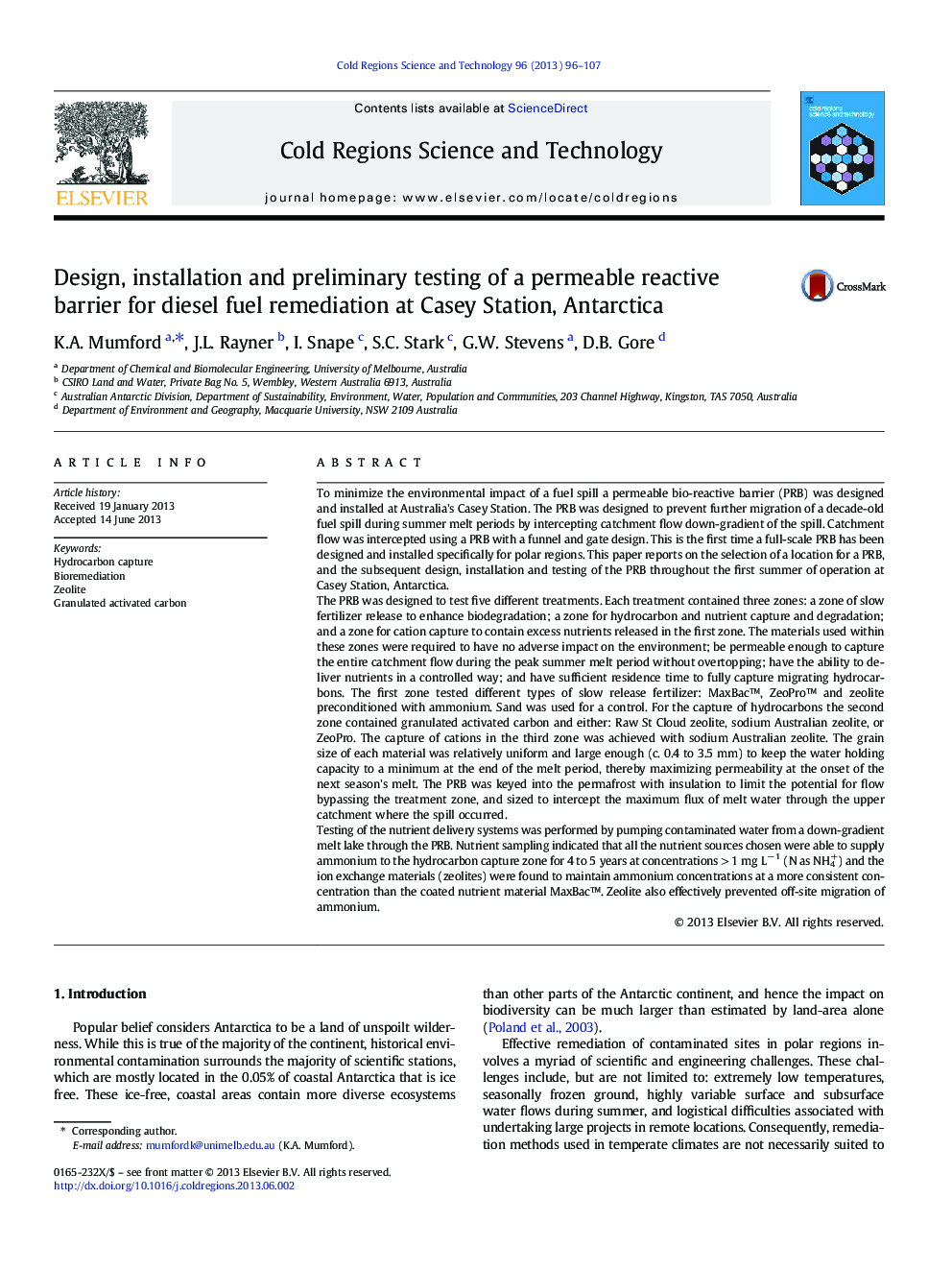| کد مقاله | کد نشریه | سال انتشار | مقاله انگلیسی | نسخه تمام متن |
|---|---|---|---|---|
| 4675815 | 1634466 | 2013 | 12 صفحه PDF | دانلود رایگان |
• A PRB was built and installed in Antarctica to contain and degrade fuel.
• The PRB comprised of; nutrient release, hydrocarbon and excess nutrient sorption.
• Design, installation and preliminary testing of the PRB are discussed.
To minimize the environmental impact of a fuel spill a permeable bio-reactive barrier (PRB) was designed and installed at Australia's Casey Station. The PRB was designed to prevent further migration of a decade-old fuel spill during summer melt periods by intercepting catchment flow down-gradient of the spill. Catchment flow was intercepted using a PRB with a funnel and gate design. This is the first time a full-scale PRB has been designed and installed specifically for polar regions. This paper reports on the selection of a location for a PRB, and the subsequent design, installation and testing of the PRB throughout the first summer of operation at Casey Station, Antarctica.The PRB was designed to test five different treatments. Each treatment contained three zones: a zone of slow fertilizer release to enhance biodegradation; a zone for hydrocarbon and nutrient capture and degradation; and a zone for cation capture to contain excess nutrients released in the first zone. The materials used within these zones were required to have no adverse impact on the environment; be permeable enough to capture the entire catchment flow during the peak summer melt period without overtopping; have the ability to deliver nutrients in a controlled way; and have sufficient residence time to fully capture migrating hydrocarbons. The first zone tested different types of slow release fertilizer: MaxBac™, ZeoPro™ and zeolite preconditioned with ammonium. Sand was used for a control. For the capture of hydrocarbons the second zone contained granulated activated carbon and either: Raw St Cloud zeolite, sodium Australian zeolite, or ZeoPro. The capture of cations in the third zone was achieved with sodium Australian zeolite. The grain size of each material was relatively uniform and large enough (c. 0.4 to 3.5 mm) to keep the water holding capacity to a minimum at the end of the melt period, thereby maximizing permeability at the onset of the next season's melt. The PRB was keyed into the permafrost with insulation to limit the potential for flow bypassing the treatment zone, and sized to intercept the maximum flux of melt water through the upper catchment where the spill occurred.Testing of the nutrient delivery systems was performed by pumping contaminated water from a down-gradient melt lake through the PRB. Nutrient sampling indicated that all the nutrient sources chosen were able to supply ammonium to the hydrocarbon capture zone for 4 to 5 years at concentrations > 1 mg L− 1 (N as NH4+) and the ion exchange materials (zeolites) were found to maintain ammonium concentrations at a more consistent concentration than the coated nutrient material MaxBac™. Zeolite also effectively prevented off-site migration of ammonium.
Journal: Cold Regions Science and Technology - Volume 96, December 2013, Pages 96–107
